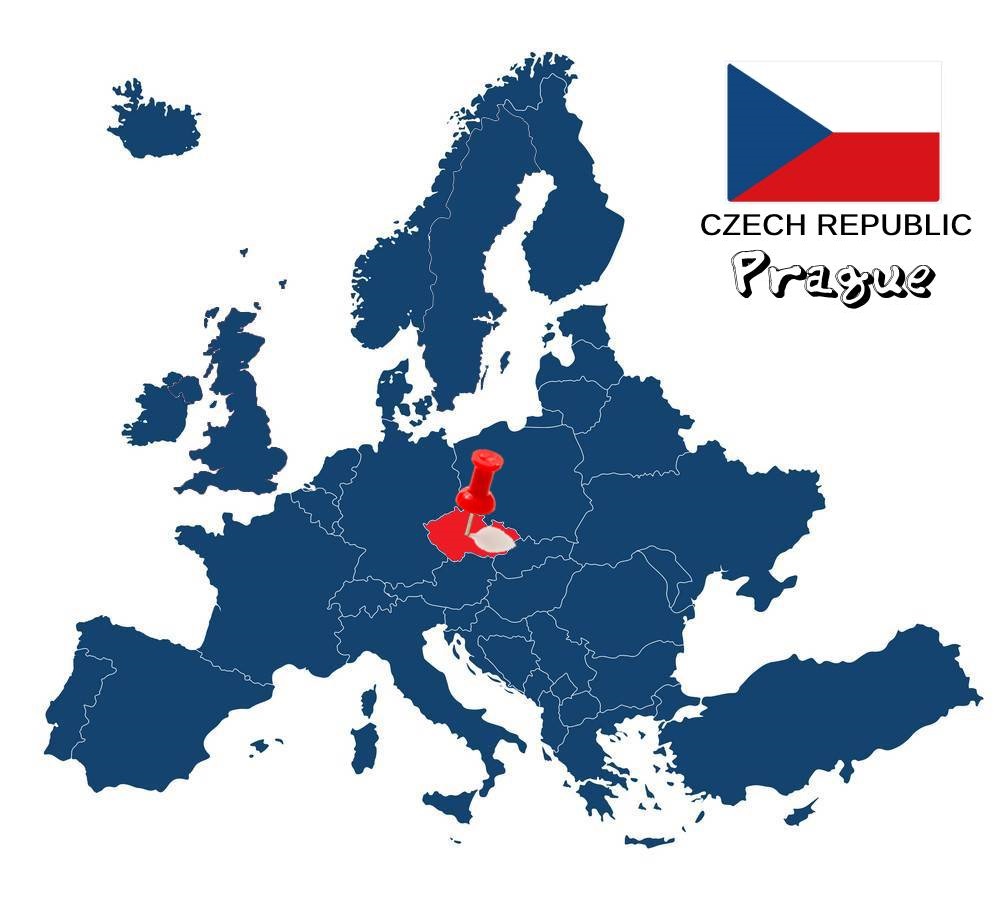
A city that has preserved its identity unchanged over the centuries. A metropolis with a historic center, included in the UNESCO world heritage list. A place full of impressive buildings in various architectural styles, with vibrant life and good food. According to many, the most beautiful capital in Europe. In a word, Prague.
A few words about the city
Prague is the capital and largest city of the Czech Republic. It is built on the banks of the Moldova River in Central Bohemia and has about 1.3 million inhabitants. Probably the origin of the name Prague lies in the word pražati, meaning the burnt forest, which they burn to open a place for cultivation or building. It is a very lively town, with historical wealth, amazing architecture and very interesting gastronomy. Prague has many nicknames with the most famous of them being the "Golden City" and the "Mother of cities", the reasons I think are obvious. Plus, since 1992, the historic city center has been included in UNESCO's list of World Heritage sites. So I will try to introduce you to Prague through my own eyes and share with you what I think should be seen by someone who visits it for the first time.
Staroměstské náměstí
The heart of Prague beats in its Old Town (Stare Mesto). The best place to start exploring is undoubtedly the Old Town Square (Staromestské namesti), where you will find most of the Czech capital's attractions. The most famous of these is the Astronomical Clock (Pražský Orloj), which is connected to the Town Hall of the Old Town (Staromestská radnice). It is a very impressive medieval clock, unique in its kind, which first worked in 1410, making it the third oldest astronomical clock in the world and the oldest clock still in operation! This particular clock was so innovative for the time, that according to legend, the then municipal ruler blinded its creator so that he could not do something similar again. However, he took revenge on them, since shortly before his death he had one of his friends break the springs, so that the clock stopped working for 100 years! When you find yourself in the square, do not miss the parade of the Apostles, which takes place every hour from 9 in the morning until 11 in the evening! Finally, you can climb to the top, by stairs or elevator, to admire the wonderful view of the whole old town. Admission costs 250 koruna, which is about 10e.
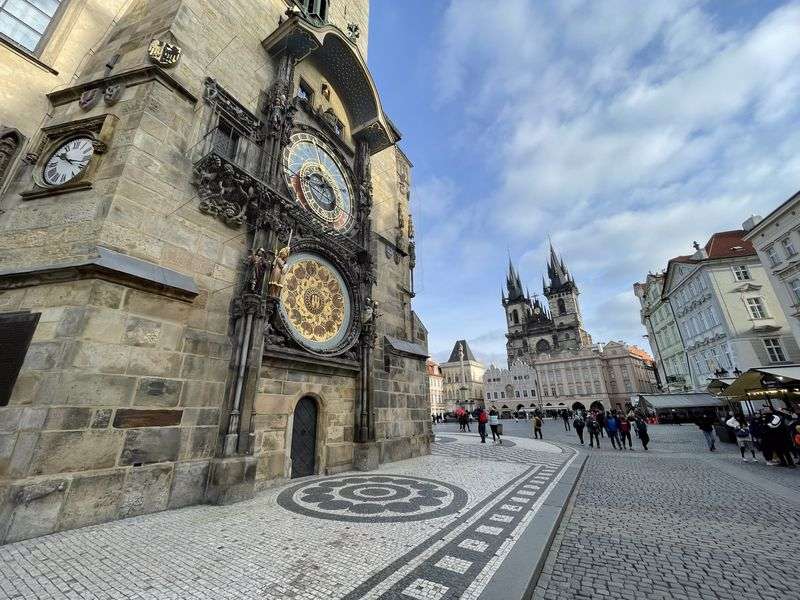
In the same square, the Church of Our Lady of Tyn (Chrám Matky Boží před Týnem) still dominates. This church was constructed in the 14th century and was the main place of worship for foreign merchants visiting the city. It has to take pride in its two impressive Black Spires, hidden behind the bright facades of the square's buildings. In contrast to its Gothic architecture externally, the interior of the church is decorated in the Baroque style. However, you will find various decorative elements dating back to the 15th century, such as a gothic stone pulpit, statues of St. John and the Virgin of Tyn, paintings of famous painters and much more. Admission is free.

Finally, other sights that should not be missed are the Church of St. Nicholas (Kostel sv. Mikuláše), the Marian Column (Mariánský sloup), the Jana Husa Monument (Památník Jana Husa) and the Prague National Gallery–Kinski Palace (Národní galerie Praha–Palác Kinských).
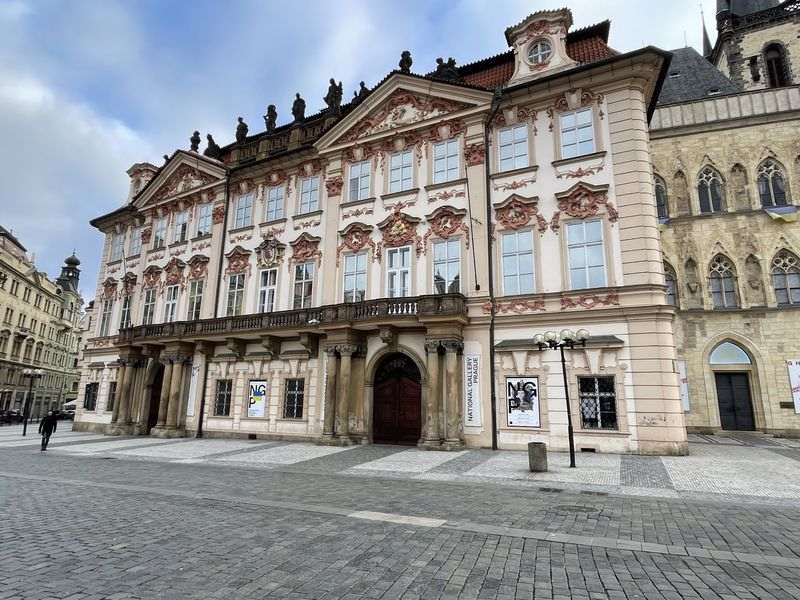
Karlův most
Charles Bridge (Karlův most) is undoubtedly Prague's most photographed and busiest spot. It connects the two banks of the Moldova River and the old and new city, and is considered one of the most beautiful arch bridges in Europe. Its construction began in 1357 under the patronage of Charles IV of Bohemia, hence its name, and was finished in the early 15th century. It is apparently the oldest bridge in Prague, which is decorated with thirty (!) statues, Baroque in style, that have transformed it into an open-air museum. The most famous of these is the statue of Saint John of Nepomuk with the wreath with the five golden stars. According to legend, this one was the confessor of the queen, who was considered a traitor and was thus tortured to death and thrown into the waters of the river. Then five stars appeared which also adorn this statue. According to the locals, if you touch them, you will have eternal luck! Equally impressive are the towers of the bridge. The Eastern Tower (Staroměstská mostecká věž), located at the end of the old town, depicts Charles IV and his son Vaclav IV, while St. Vitus is in the middle. On the other hand, there are two towers, with the left one dating from the 12th century, being part of the previous bridge! If you are an athletic type, it is worth climbing the hundreds of steps of the Old Town tower to see the bridge and the Moldova River from another perspective. Admission costs 150 koruna, that is, about 6.5e.
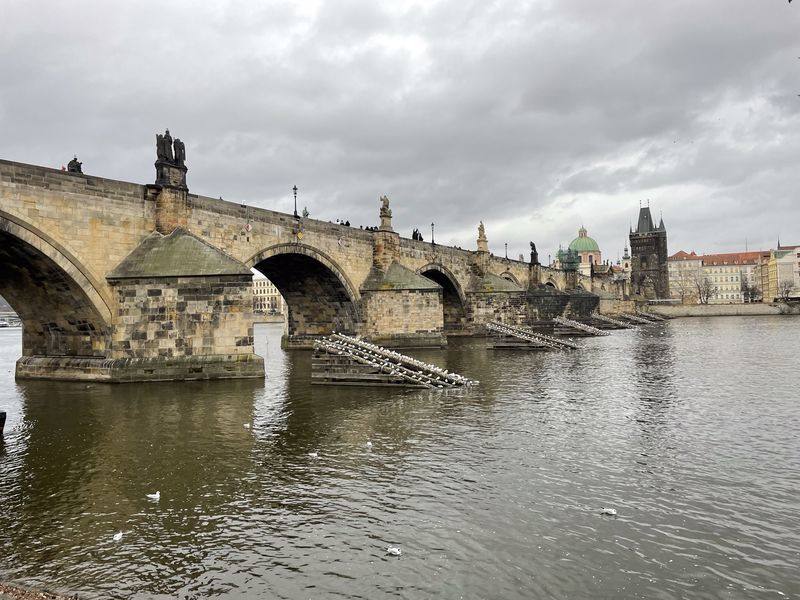
Pražský hrad
Prague Castle (Pražský hrad) is located in Hradcany district and is considered one of the largest and oldest castles in the world! Essentially it is not just a fortress, but an entire castle-state, which includes the palace, the Cathedral, but also offices, courtiers ' residences, various churches and small palaces. The history of the castle begins in the 9th century, while the palace was originally erected three centuries later and rebuilt in the 14th century. It was the seat of the Kings of Bohemia and then of the Czech presidents, and has been considered a symbol of the Czech state for more than a thousand years. Entrance to the castle grounds is free, but I suggest buying a ticket, costing 250 kronor, that is about 10,5e, to discover the individual pieces that make it up.
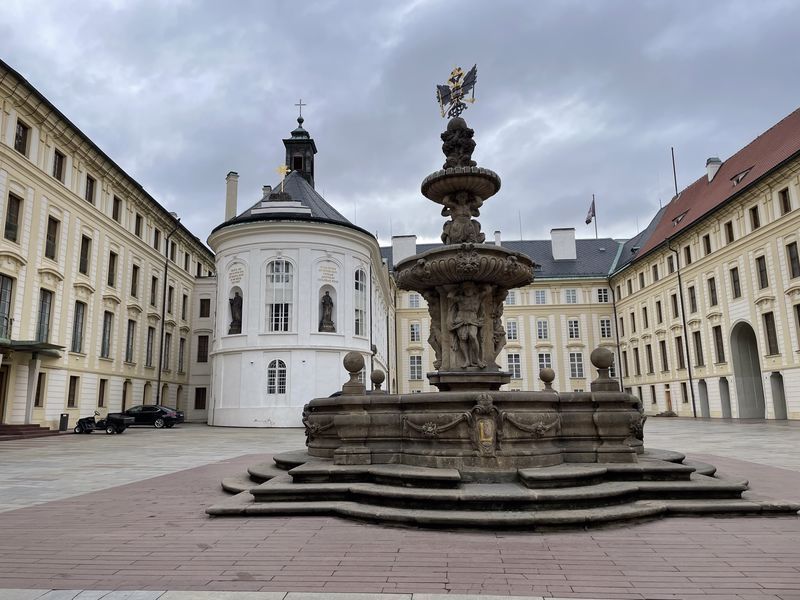
Initially, I suggest you enter the St. Vitus Cathedral (Katedrála Sv. Víta). It is one of the oldest buildings in the city, which is both the metropolis of Prague and the mausoleum of the former Kings of the country. It is 124 meters long, 60 meters wide, while the Spire reaches 99.5 meters, being the tallest tower in the city. It began to be built in 1344 on the ruins of a pagan temple, by order of Vaclav, while it was completed about 600 years (!) later, in 1929!
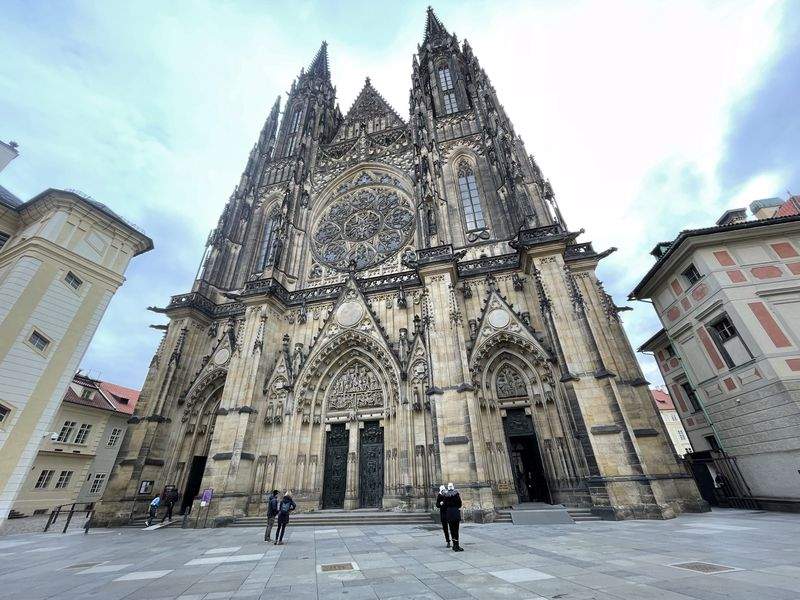
In addition, you will have the opportunity to see the impressive gardens (Zahrady pod Pražským hradem), the Old Royal Palace (Starý královský palác), the Treasury and Crown Jewels, the Tomb of Nepomuk, the charming Basilica of St. George (Bazilika svatého Jiří), the Art Gallery (Obrazárna Pražského hradu) and the Golden alley (Golden Lane). This is also the most attractive part of the castle, which consists of small colorful houses, which look like houses for dwarfs! According to legend, this is where the Alchemists of Emperor Rudolf II lived, who tried to convince him that they could make gold from lead, the philosopher's stone and the elixir of life! Each of these houses has a different theme, with some representing the lifestyle of the time, some exhibiting armor and some selling souvenirs! If you find yourself there, do not hesitate to enter the little house with number 22, in which the famous writer Frans Kafka lived!
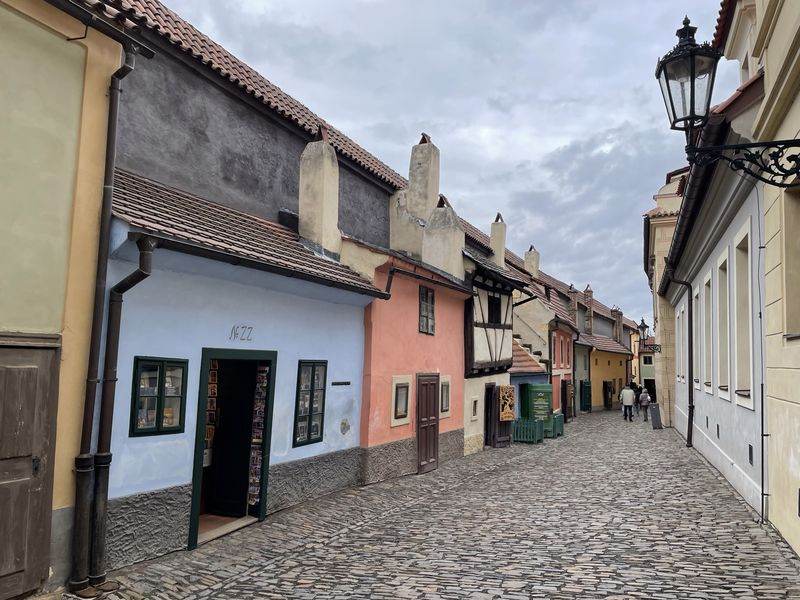
Židovská čtvrť
The Jewish quarter of Prague (Židovská čtvrť), is considered one of the oldest in the city, with a history of over a thousand years! It all began in 1179, when the Christians demanded the "banishment" of the Jews from the old city, resulting in the creation of a Jewish ghetto just outside it. There are scattered monuments of the past, such as the old tombstones of the old Prague Jewish cemetery (Starý židovský hřbitov) and numerous synagogues, the most important being the Pinka synagogue (Pinkasova synagogue), which now serves as a Holocaust memorial, with exhibits focusing mainly on children's faces. Plus, you will find the Jewish Museum of Prague (Židovské muzeum v Praze), which is not only housed in one building, but the ticket is single and hosts a rich collection of cultural handicrafts. Also worthy of attention is the old New Synagogue (Staronová synagogue), which is Europe's oldest active synagogue, while other interesting synagogues are the Spanish Synagogue (Španělská synagogue), Klausová synagogue (Klausová synagogue) and the Jubilee synagogue (Jeruzalémská synagogue). Ultimately, the area is also famous for kosher restaurants, as well as the luxury shops of famous designers along Paris Avenue (Parizska Street), such as Cartier, Luis Vuiton, Dior and many more.
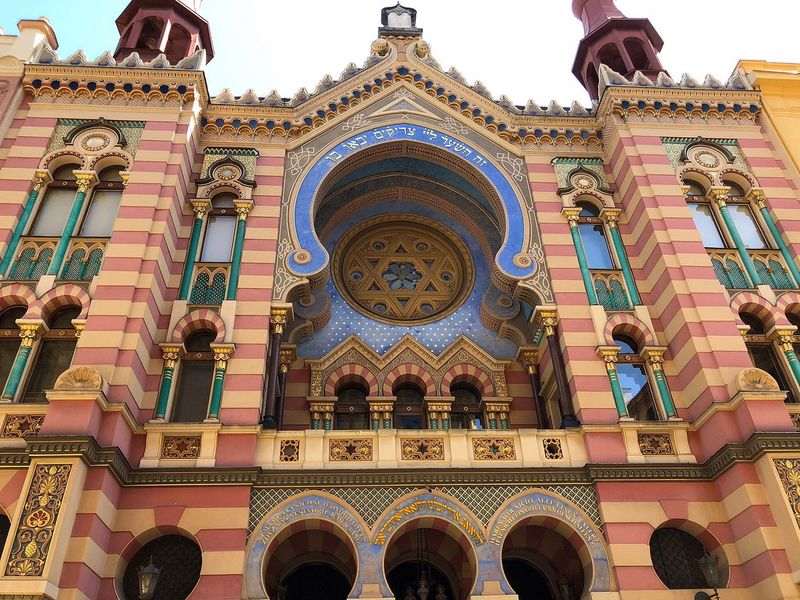
Městská knihovna v Praze
The Prague Municipal Library (Městská knihovna v Praze) is located in the center of the old town, on Marianske Square (Mariánské Náměstí). It is one of the largest in the city, which was built in 1928 and is not only a simple library, but also a place for adult education, concerts and exhibitions! The interior is beautifully decorated, with two floors full of books in Czech and other foreign languages, the oldest work in the collection being a print of the Prague Bible of 1488! The second floor of the building focuses on modern Czech Art from the 19th and 20th centuries. Finally, in the museum there is a cafe, offering snacks, coffee, wine and more, while in the foyer of the main building, you can see a charming and unique Book Tower! The designer has cleverly added a mirror under this tower of pop-up books, to make it look like an endless book tunnel!
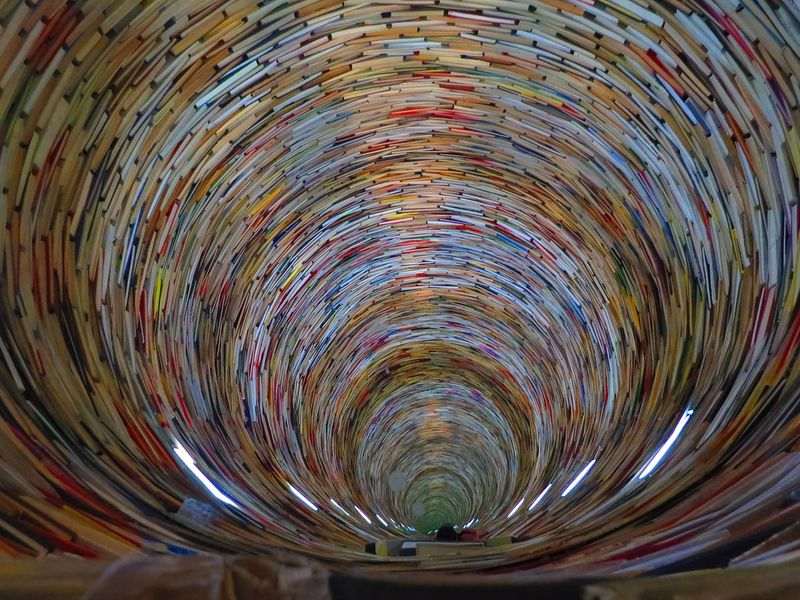
Tančící dům
The Dancing House (Tančící dům), which they affectionately call “Fred and Ginger”, is considered a pillar of modern architecture in Prague. "Danced" for the first time in 1997 and is the creation of the world famous architects Vlado Milunić and Frank O. Gehry. Their idea was inspired by the dance skills of the famous Film couple (Fred and Ginger), with the stone tower symbolizing Fred Astaire and the glass, his partner Ginger Rogers. Although the Dancing House is mainly an office building, you can visit a gallery and a restaurant with a terrace that operate in it and offer panoramic views of the whole city.
Obecní dům- Prašná brána
The City Hall of Prague (Obecní dům) is considered one of the most significant buildings in the city, as it is where the independence of Czechoslovakia was declared! It is an Art Nouveau building, built from 1905 to 1911 where the palace of the Royal Court formerly stood. It is considered a proof of unprecedented artistic and handicraft skills and quality, and today it functions as a concert hall and dance hall. Inside the Municipal Hall there is a cafe, a French restaurant and a wine bar, while many of the rooms of the building are closed to the public and open only for guided tours.
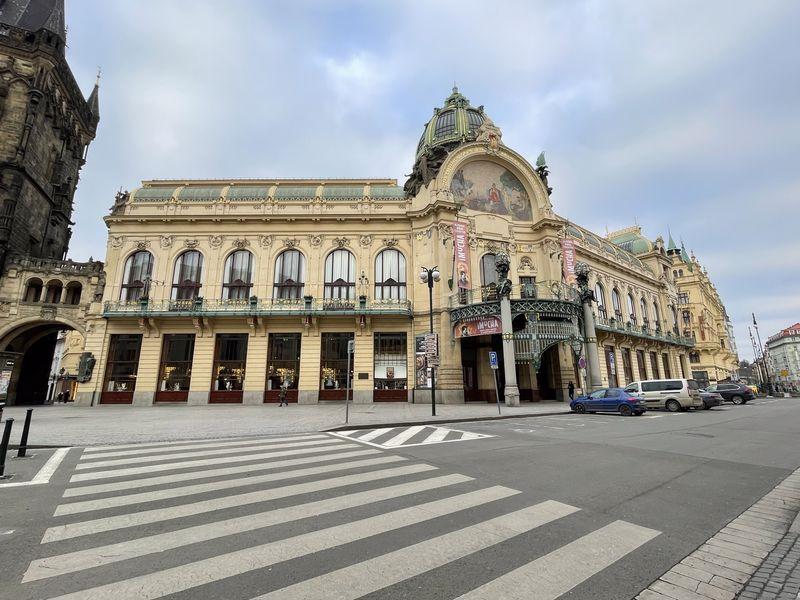
Right next to it is the impressive restored medieval dust Gate (Prašná brána). It is one of the first gates of Prague, which separates the old from the new town and was the start of the coronation processions of Czech Kings towards the castle. Its construction began in 1475 as a coronation gift of the city council to Vladislav II and was inspired by the work of Peter Parler on the Charles Bridge. While it was being built, it was called the new tower, however its current name comes from the 17th century, when it was used as a gunpowder storage area. The gate suffered major damage during the Battle of Prague, but the sculptures on the tower were replaced in 1876. At the top of the tower, there is a gallery that also offers great views of the city, with entry costing 150 Czech koruna (i.e. about 6.5 e).
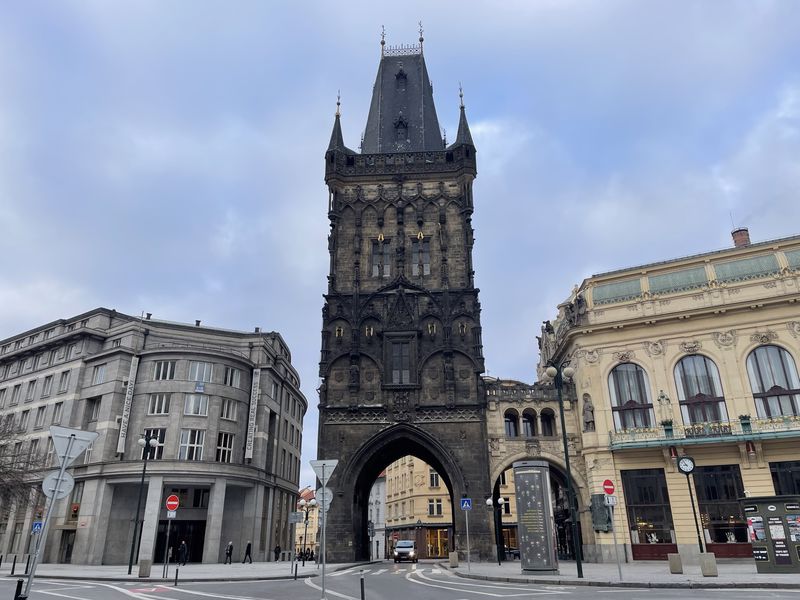
Václavské náměstí
Wenceslas Square (Václavské náměstí) is the commercial and administrative center of the city, as well as the site of important social and historical events. It is also the place with the busiest pedestrian traffic in the whole country, and is named after Saint Wenceslas, the patron saint of Bohemia. There you will find cinemas, theaters, banks, hotels, restaurants, dozens of small and large shops and administrative centers. The square was created during the founding of the new city by Charles IV in 1348, while at its end there is the National Museum (Národní museum) and the monument of the national patron, saint Wenceslas (Pomník svatého Václava) from 1912. The National Museum was founded in 1818 by Kašpar Maria Šternberg and houses almost 14 million objects from the fields of Natural History, History, Arts, Music and librarianship! Admission costs 350 Czech koruna, which is about 15e.
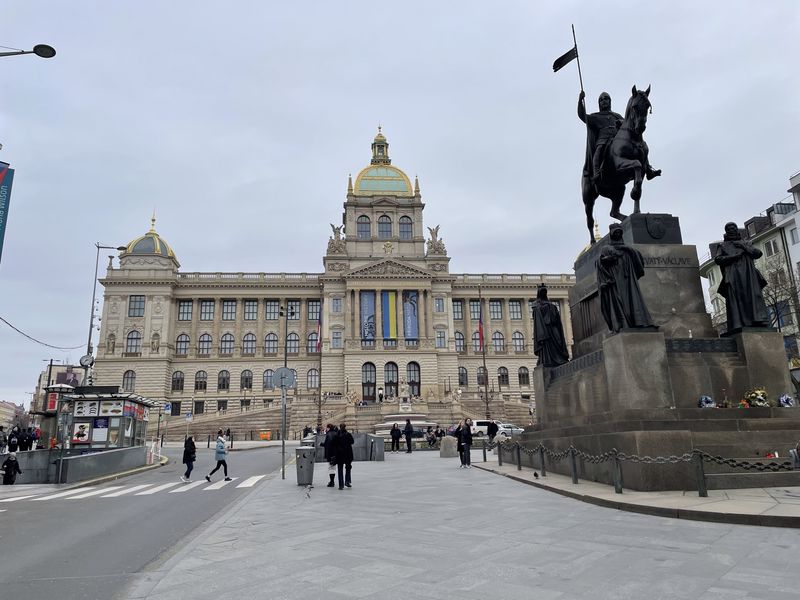
Lennonova zeď
One of Prague's most special sights is undoubtedly Lennon's wall (Lennonova zeď). In the 1980s John Lennon became a symbol for all anti-government Czech protesters, who wrote on various walls, lyrics by this artist. This otherwise simple wall near Charles Bridge became a place for them to show their grief, to paint pictures, lyrics and slogans associated with Lennon. Despite efforts by the then police to eliminate the graffiti, Lennon's Wall continued to exist and the site became a symbol of hope and peace for the entire population of the city. The tradition continues to this day, and along with gatherings for Lennon's death anniversary, tourists can be photographed in front of him or add their own emotions to the wall.
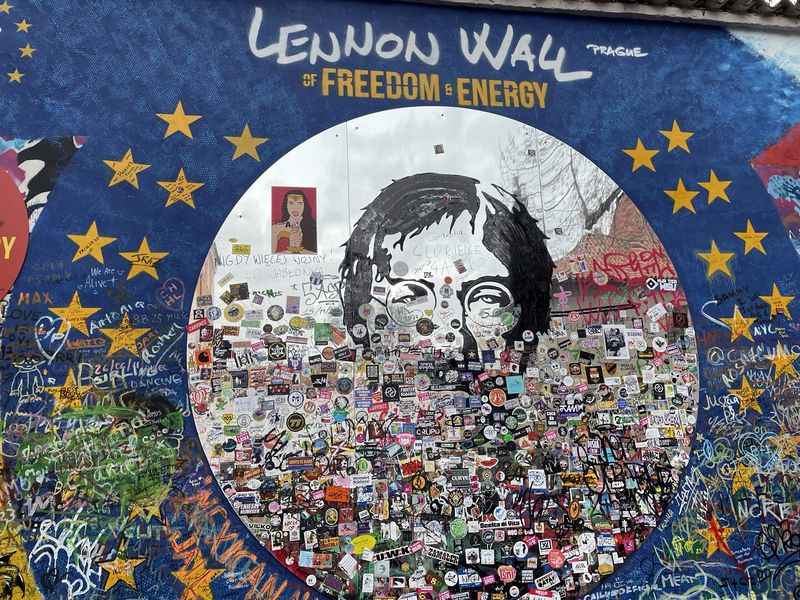
Museum Kampa
The Kampa museum is housed in the former Sova Mills, on the East Bank of the island of Kampa on the Moldova River. The pieces on display come entirely from the private collection of Minta Mladkova, wife of Zon Viktor Mladek. It mainly contains works by abstract art pioneer Frantisek Kupka and Czech Cubist sculptor Otto Gutfreud, as well as works by prominent 20th-century artists of the Eastern Bloc. The aim of the Kampa Museum is to present the difficulties that this art went through at its beginning, which should not be forgotten. Admission costs 350 Czech koruna, which is about 15e.
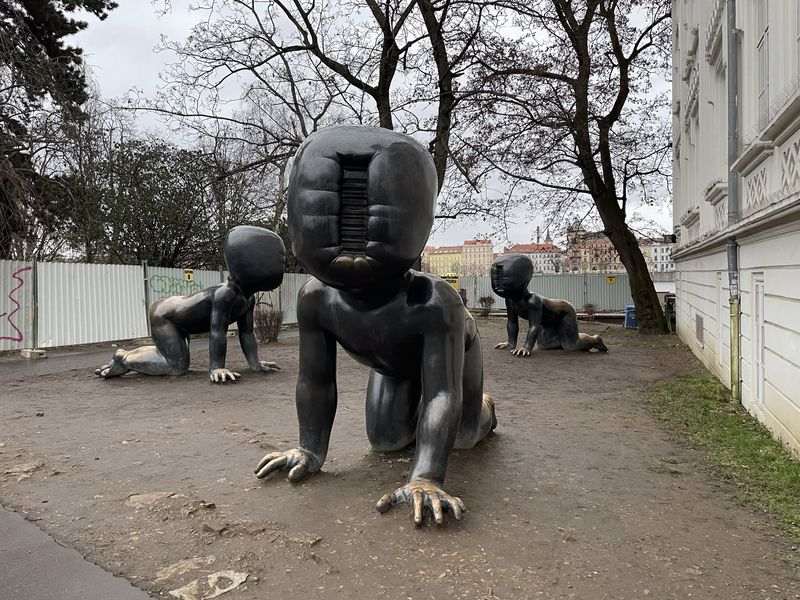
Petřín
Petrin Hill (Petřín) is 318 meters high and is a stone's throw from Prague Castle. It is a green oasis in the city, considered ideal for a walk away from the hordes of tourists. The trademark of the hill is, of course, the Petřín Lookout Tower, built as part of the Jubilee Exhibition in 1891 and strongly reminiscent of the Eiffel Tower in Paris. It is 58.70 meters high and 299 steps lead to its top, which is at the same altitude as the real Eiffel Tower! From its top you will have a view not only of the entire city, but on a clear day you can see almost all of Bohemia! To reach the hill and its tower, just take a cable car, which runs continuously and costs the same as a tram ticket.
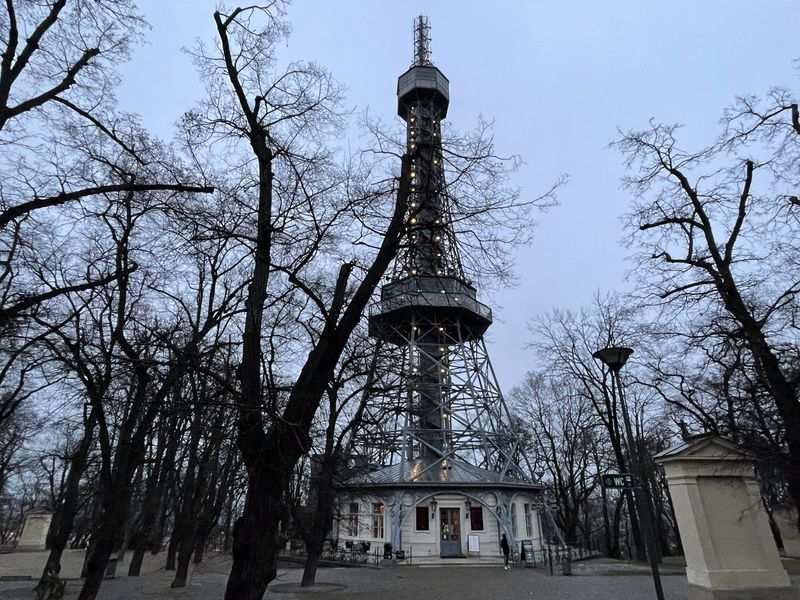
Strahovská knihovna
The library of the Premonstratensian Monastery in Strahov (Strahovská knihovna) is one of the most valuable and best preserved historical libraries in the world! The oldest part of the present library, the baroque Theological Hall, was built between 1671-1674, while the main classicist vaulted philosophical Hall dates from 1794! Most of the halls are dominated by ceiling murals by Siard Nosecki and Anton Maulberts, while the collections number 200,000 volumes, including over 3,000 manuscripts and 1,500 originals, kept in a special repository. Admission costs 150 Czech koruna, which is about 6.5e.
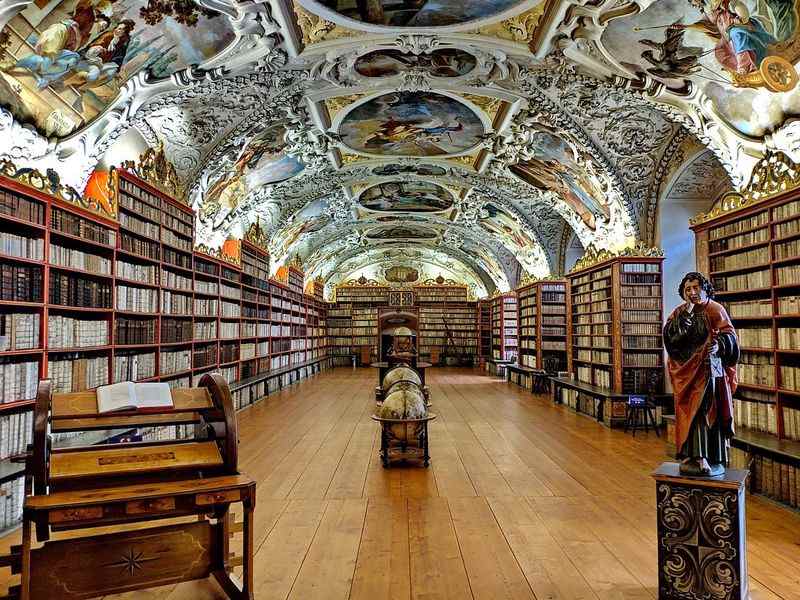
How to go
Currently Thessaloniki is not directly connected by air with Prague, so in order to reach the city you have to make at least one stop. The most economical option comes from a combination of flights between Wizz Air and Ryanair, via Budapest, that with proper planning you can find tickets starting from 127€ round trip! Finally, you can go to a neighbouring city, such as Bratislava or Vienna and reach the town either by train or bus.
Where to stay
Prague is a very touristy city, which has a wealth of accommodation options. I would suggest choosing the part of the old town, which is the most beautiful and most convenient, as you will be close to everything! So my proposal is the Hotel City Inn, which is close to both the old town and the bus and train stations.
How to move
Prague has an extensive public transport network that has been described as one of the best and most reliable in Europe. Thanks to public transport, you can reach even the most remote corners of the metropolis quickly and easily. Metro, trams and buses operate in the city, while taxis are relatively cheap.
What to eat
Czech cuisine is among what we call "heavy" cuisines! It is characterized by the strong presence of meat, sauce and vegetables, while all dishes are accompanied by a chilled beer. One of the country's most traditional dishes is Svíčková na smetaně, which is marinated veal fillet, usually served with a kind of doublings or puree. As in most central European countries, gulash is naturally very popular in the Czech Republic, while locals also prefer duck, meatloaf and any kind of soup. If you want to taste delicious local dishes, I suggest visiting Restaurace U Fleku in the old town and Restaurant U Glabicu, on the side of the castle. For coffee or dessert with a view of the central square, it is necessary to find yourself in Terasa U Prince, and finally for the traditional "chimneys" Trdlo and Old Czech Chimmey Cake.
Useful information

In Prague we travel with a passport or a new type of Police ID, where the details are written in Latin characters.
In Prague the language used is, of course, Czech. But most, if not all, speak English, so ask for clarification in English.
The country's currency is the Czech koruna (CZK) and its rate is currently 1€ = 23.57 koruna.
Prague is an hour behind Greece (GMT +1).
Getting to and from Prague Airport is simple, since there are continuous bus services.
The Greek Embassy in the Czech Republic is located at 19 Na Orechovce Street and its phone number is 222250943, 222250955.
In winter temperatures are quite low, usually below zero, so the ideal time to visit the city is spring.
Recommended excursions → Karlovy Vary, Dresden, Bratislava, Vienna

If this article seemed interesting or contributed to your quality information, then you can like my facebook page: o_thessalonikios or follow me on instagram!
Mouzakidis Pantelis
